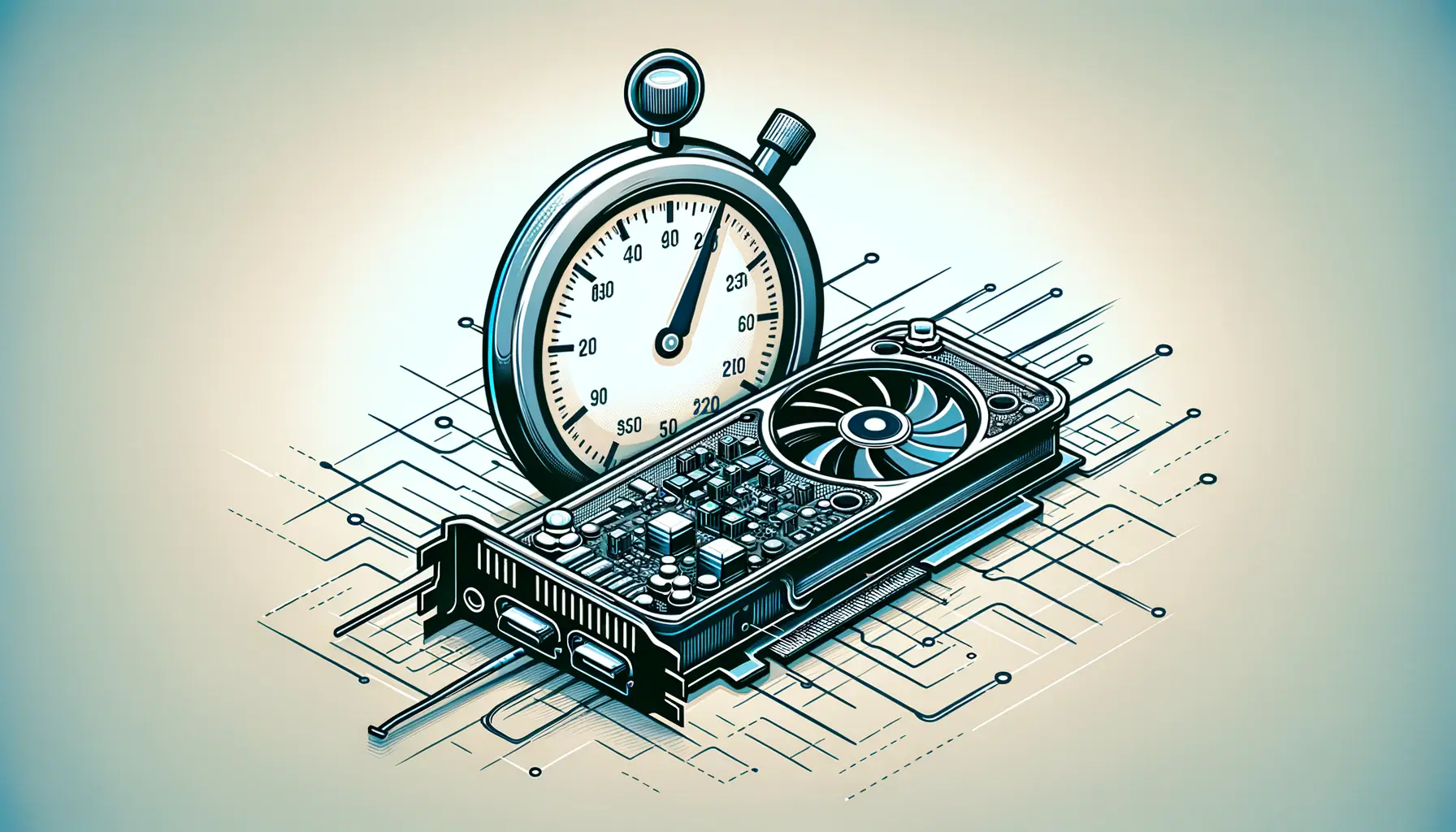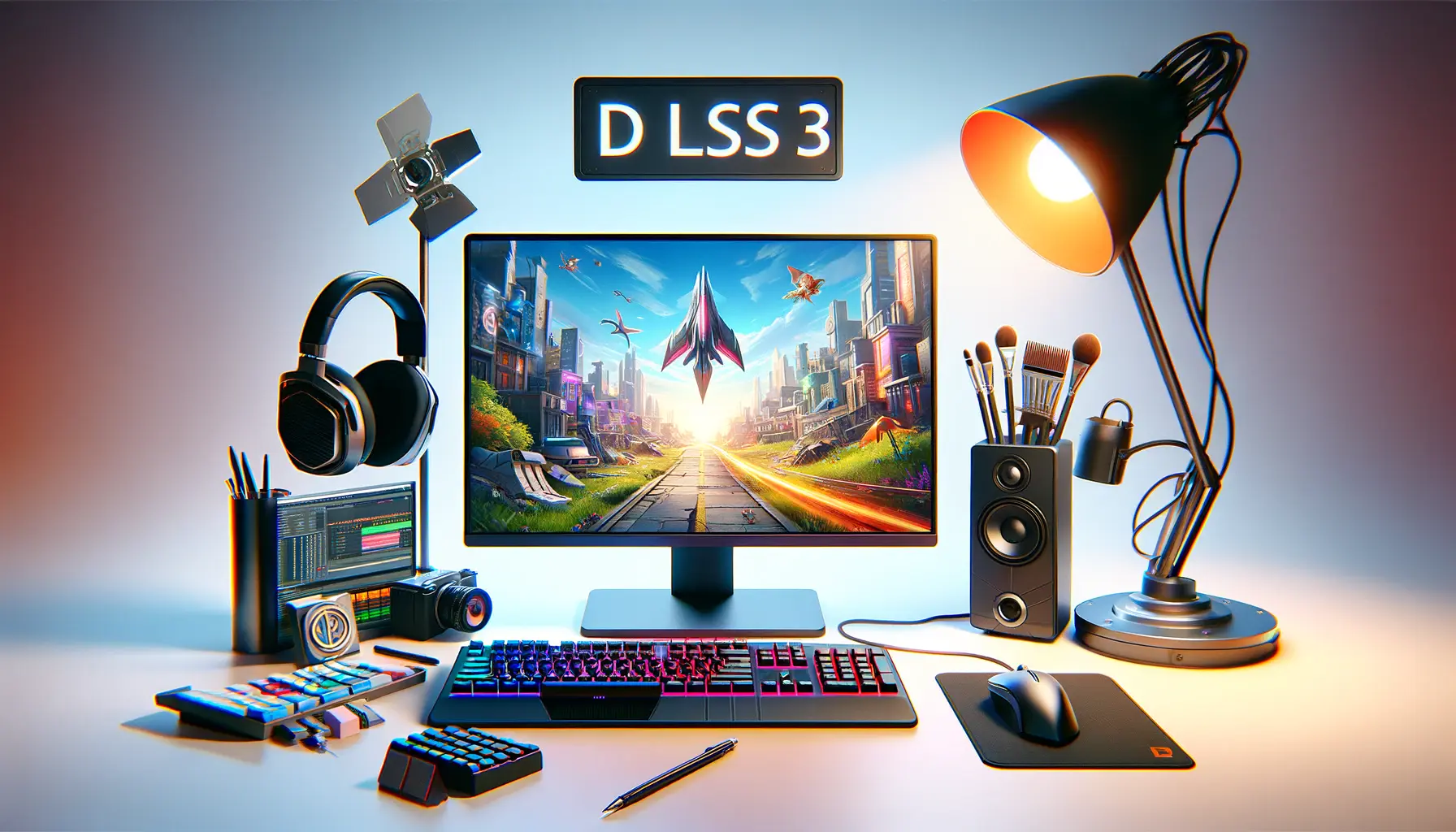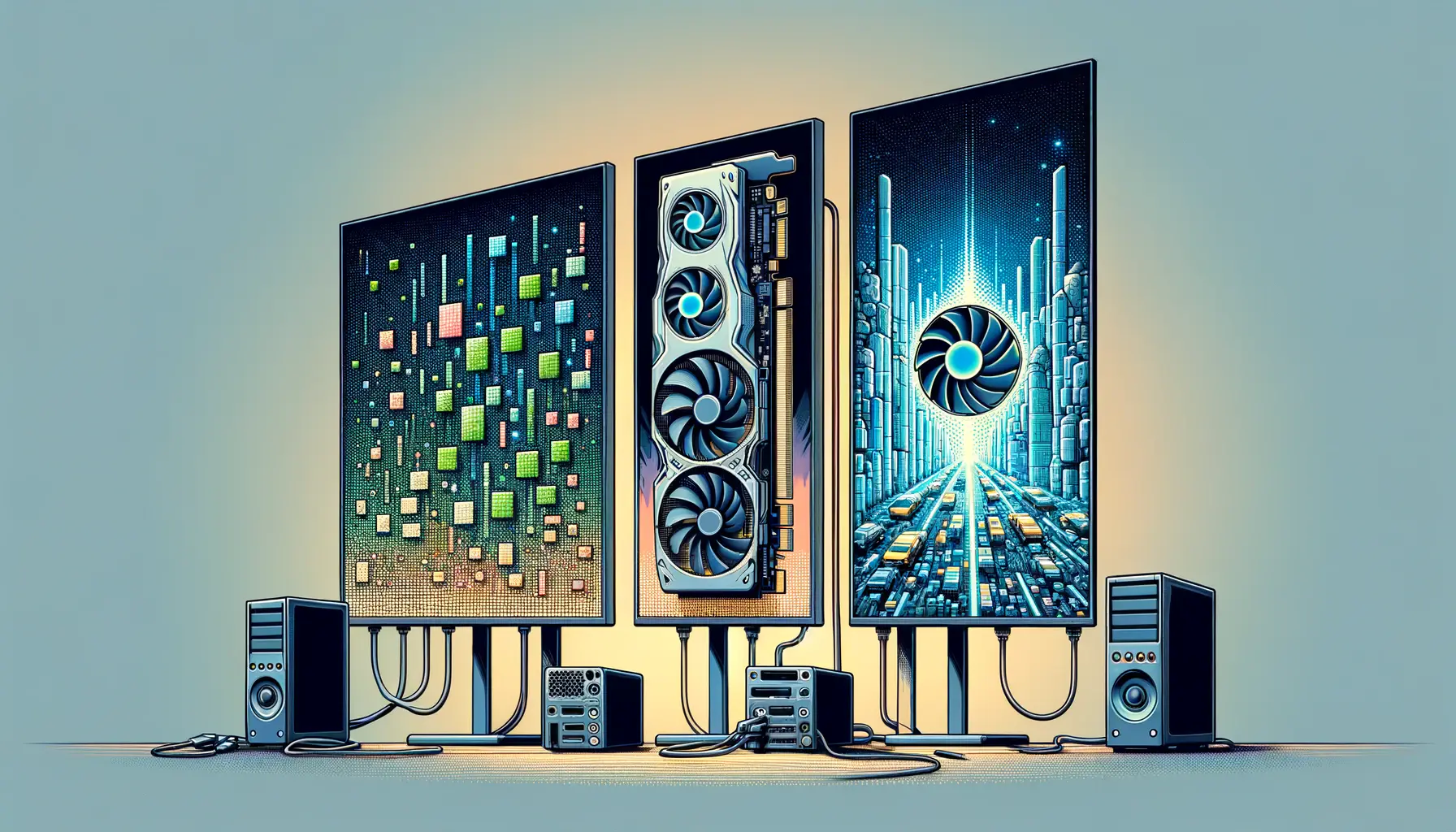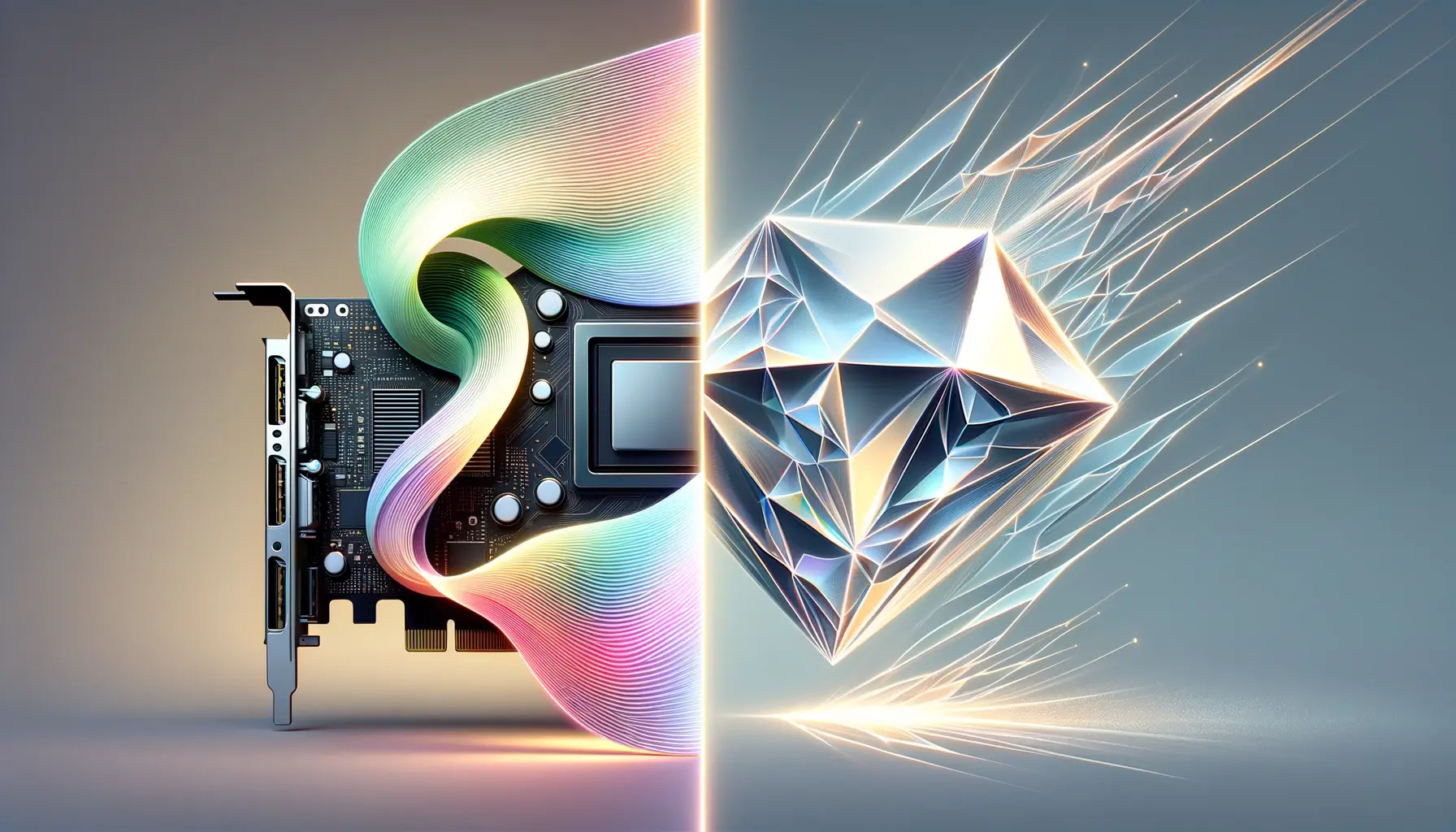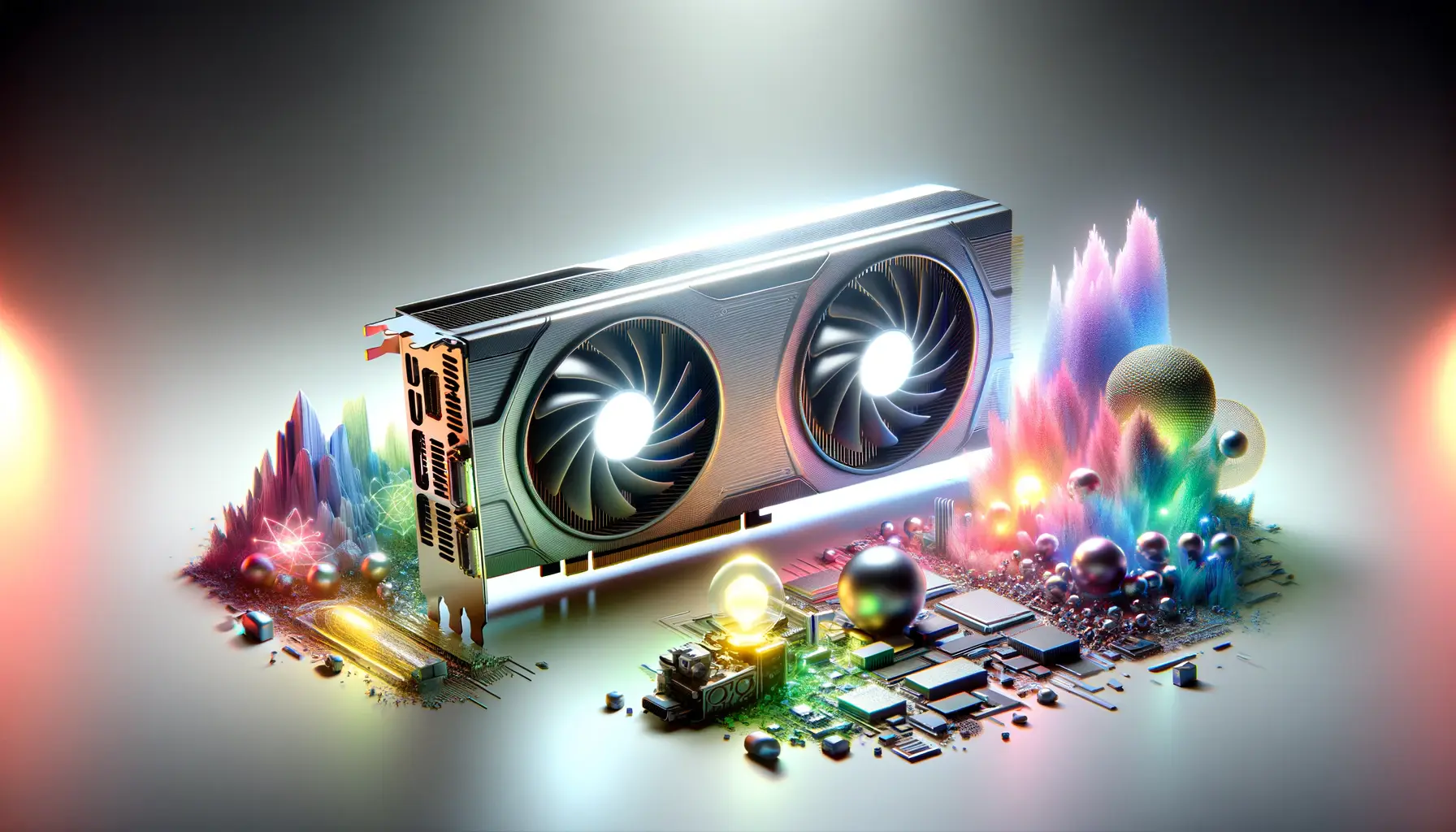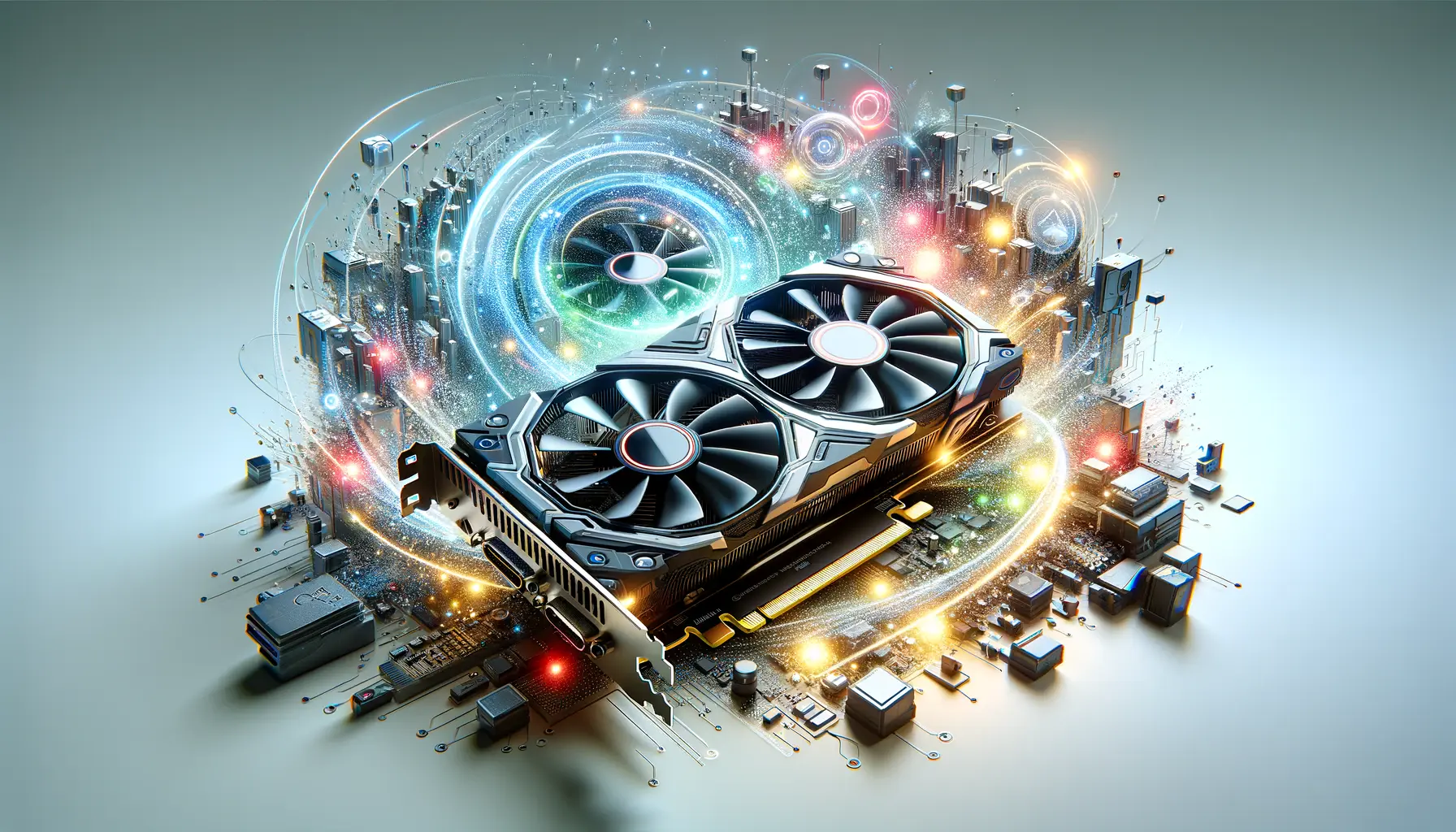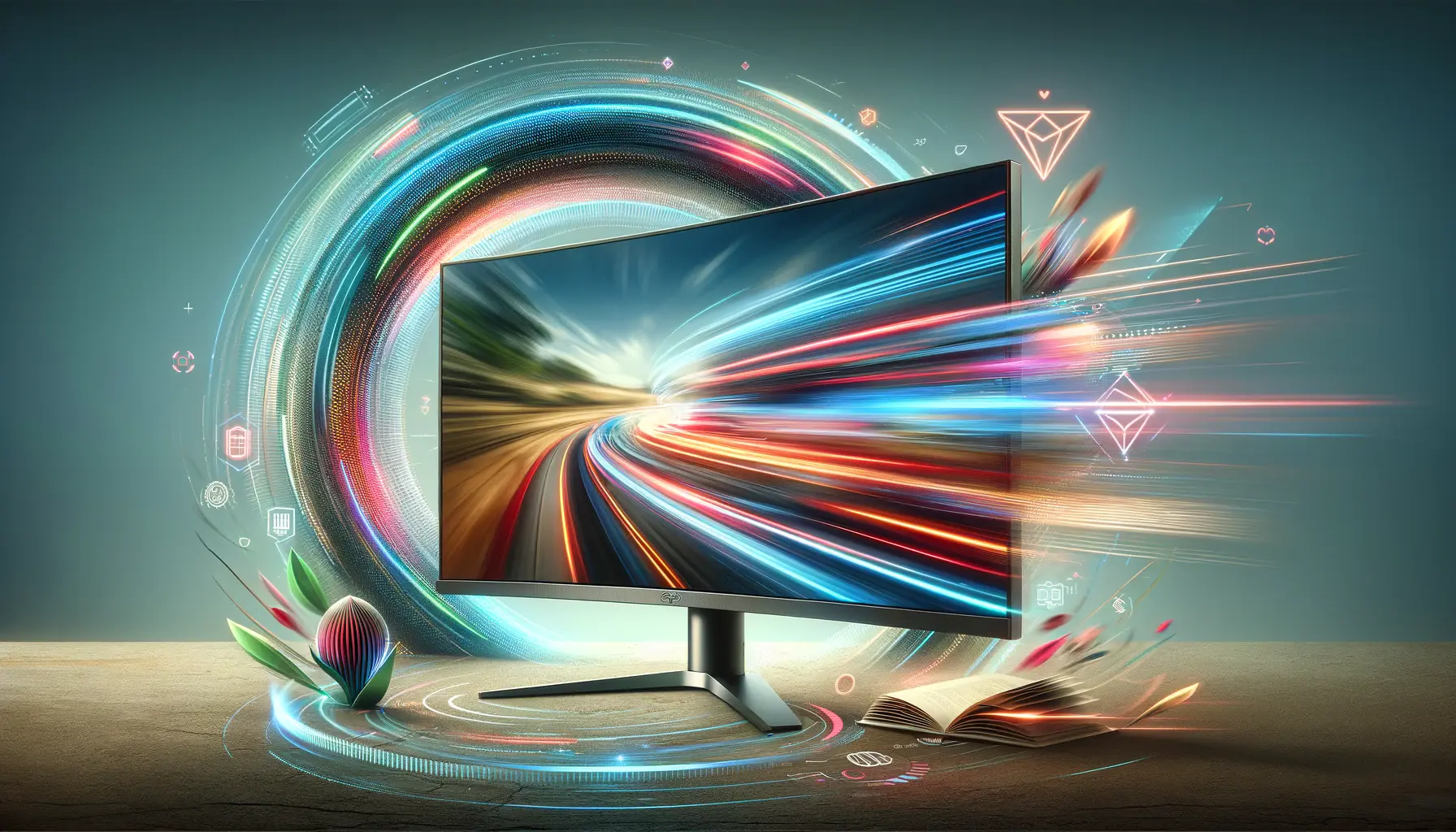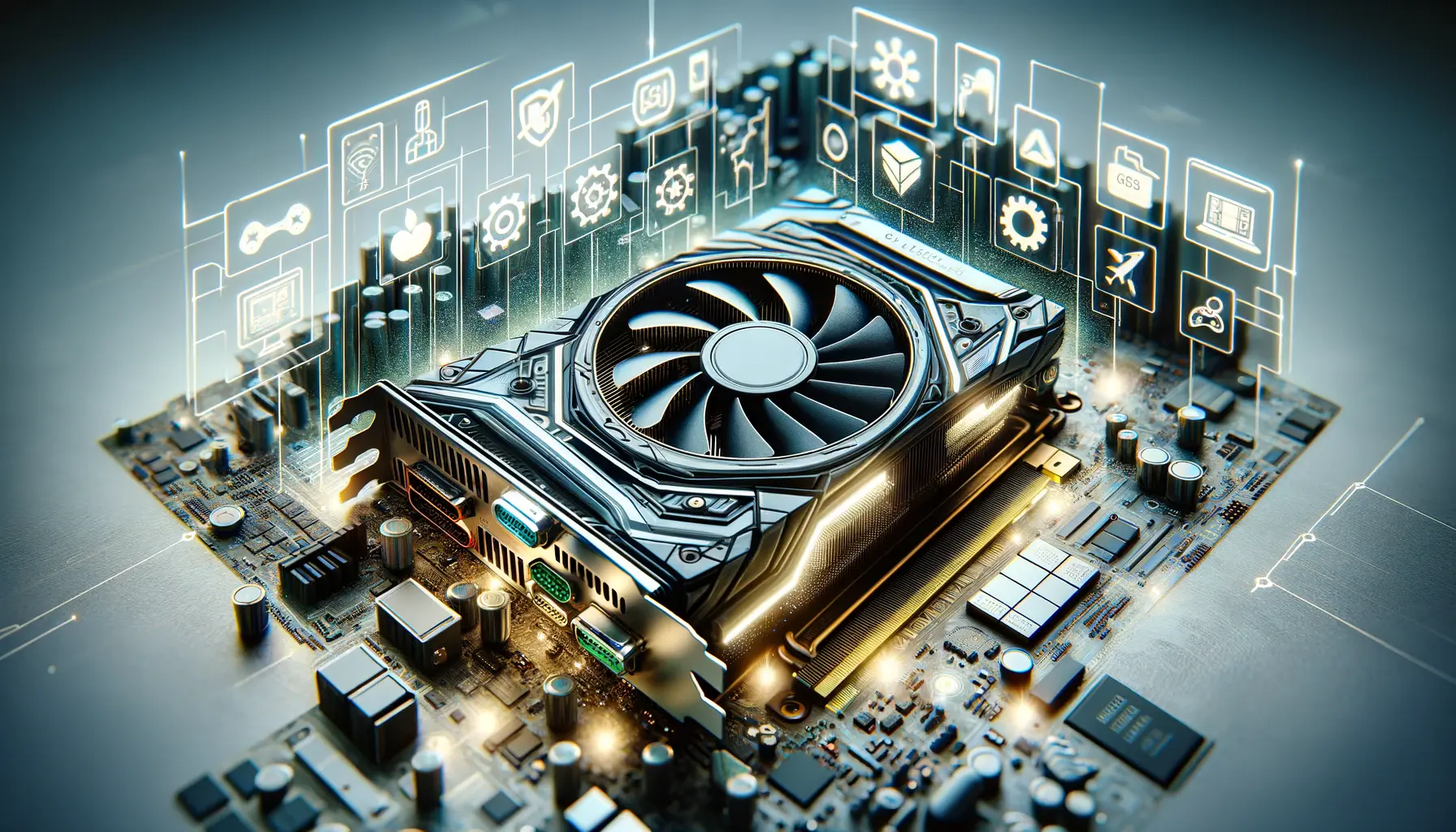Deep Learning Super Sampling (DLSS) technology by NVIDIA has been a game-changer in the realm of gaming and graphics, offering enhanced image quality without compromising performance.
With the advent of DLSS 3, NVIDIA has taken a significant leap forward, introducing innovative latency reduction techniques that promise to revolutionize the gaming experience.
This evolution not only signifies a breakthrough in rendering technology but also sets a new benchmark for gaming performance, making it a pivotal moment for gamers and developers alike.
The core objective of DLSS 3 revolves around reducing latency, a critical factor that influences the responsiveness and fluidity of gameplay.
Latency, or the delay between a user’s action and the game’s response, can significantly affect the gaming experience, especially in fast-paced genres.
NVIDIA’s DLSS 3 addresses this challenge head-on, employing advanced algorithms and AI-driven processes to minimize input lag, thereby ensuring a seamless and immersive gaming experience.
This article delves into the intricacies of DLSS 3’s latency reduction techniques, exploring how they enhance game performance and visual fidelity.
- Understanding Latency in Gaming
- The Mechanics of DLSS 3
- Latency Reduction in Action
- Challenges and Solutions in Implementing DLSS 3
- Future Directions of DLSS and Gaming Technology
- Optimizing Gaming Setups for DLSS 3
- Community and Developer Support for DLSS 3
- Embracing the Future with DLSS 3
- DLSS 3 Latency Reduction FAQs
Understanding Latency in Gaming
What is Latency?
Latency in gaming refers to the delay between a player’s action (such as pressing a button or moving a mouse) and the game’s response to that action on the screen.
It’s a crucial aspect that can greatly influence the gaming experience, with lower latency leading to a more responsive and immersive gameplay.
High latency, on the other hand, can result in a noticeable lag, making games feel sluggish and unresponsive.
Several factors contribute to gaming latency, including hardware performance, display refresh rates, and the efficiency of game engines and rendering technologies.
The introduction of DLSS 3 by NVIDIA aims to tackle these challenges by leveraging deep learning and AI to optimize rendering processes, thus reducing latency and improving overall game performance.
Impact of High Latency on Gaming Experience
High latency can detract from the gaming experience in several ways.
For competitive gamers, even a millisecond of delay can mean the difference between victory and defeat, especially in fast-paced games where quick reflexes and timely actions are paramount.
For casual gamers, high latency can make games feel less responsive and enjoyable, leading to frustration and a diminished gaming experience.
Moreover, high latency can affect visual performance, causing stuttering, tearing, and other graphical anomalies that detract from the game’s visual appeal.
This is where DLSS 3’s latency reduction techniques come into play, offering a solution that enhances both the responsiveness and visual quality of games.
DLSS 3’s innovative approach to reducing latency is a game-changer, offering a smoother and more immersive gaming experience by minimizing input lag and enhancing visual fidelity.
The Mechanics of DLSS 3
At the heart of DLSS 3’s ability to reduce latency lies its innovative use of artificial intelligence and machine learning.
This section explores the mechanics behind DLSS 3, shedding light on how it achieves its latency-reducing capabilities while enhancing game performance and visual quality.
DLSS 3, or Deep Learning Super Sampling 3, is NVIDIA’s latest iteration in a series of groundbreaking technologies designed to leverage the power of AI to improve gaming performance.
By intelligently generating high-quality images from lower-resolution inputs, DLSS 3 not only boosts frame rates but also significantly reduces the time it takes for frames to be rendered and displayed, directly impacting latency.
Frame Generation and AI Processing
The cornerstone of DLSS 3’s latency reduction is its frame generation feature, which uses AI to create intermediate frames between those rendered by the game’s engine.
This process, known as frame interpolation, allows for smoother animations and gameplay, even at higher resolutions.
By effectively doubling the number of frames without the need for additional computational power from the GPU, DLSS 3 reduces the overall load on the system, thereby decreasing latency.
Furthermore, DLSS 3’s AI processing extends beyond frame generation.
It includes advanced algorithms for image quality enhancement, ensuring that the interpolated frames match or exceed the quality of natively rendered images.
This is achieved through deep learning techniques that have been trained on a vast dataset of high-quality game footage, allowing DLSS 3 to predict and generate high-fidelity frames in real-time.
Optimizing System Resources
Another aspect of DLSS 3’s approach to reducing latency involves optimizing the use of system resources.
By offloading some of the rendering workload to the AI-driven processes, DLSS 3 allows the GPU to focus on rendering game frames more efficiently.
This optimization leads to a reduction in the time it takes for each frame to be processed and displayed, directly contributing to lower latency.
- Efficient Use of GPU Power: DLSS 3’s AI algorithms are designed to maximize the efficiency of GPU usage, ensuring that games can run at higher frame rates without compromising on image quality.
- Reduced CPU Overhead: By handling a significant portion of the image processing through AI, DLSS 3 also reduces the load on the CPU, further contributing to latency reduction.
Incorporating AI and machine learning, DLSS 3 represents a significant leap forward in reducing gaming latency, offering a blend of performance enhancement and visual fidelity that was previously unattainable.
Latency Reduction in Action
Understanding the theory behind DLSS 3’s latency reduction capabilities is one thing, but seeing these techniques in action offers a clearer perspective on their impact.
This section examines real-world applications and the tangible benefits of DLSS 3 in reducing gaming latency, providing a practical look at how these advancements enhance the gaming experience.
DLSS 3’s latency reduction is most evident in fast-paced, high-fidelity games where every millisecond of response time counts.
By employing DLSS 3, gamers can experience significantly smoother gameplay with reduced input lag, making for a more immersive and competitive gaming environment.
Comparative Performance Analysis
A comparative analysis of games running with and without DLSS 3 technology showcases the stark differences in latency and overall performance.
Games enabled with DLSS 3 consistently demonstrate lower latency measurements, translating to quicker response times and a more fluid gaming experience.
This is particularly noticeable in titles that demand high precision and quick reflexes, such as first-person shooters and racing games.
- Reduction in screen tearing and stuttering, thanks to smoother frame rates.
- Enhanced visual clarity and detail, even in fast-moving scenes, due to DLSS 3’s intelligent frame interpolation.
User Experiences and Feedback
Gamer testimonials further underscore the effectiveness of DLSS 3 in reducing latency.
Many users report a noticeable improvement in gameplay smoothness and responsiveness after enabling DLSS 3, with some highlighting its impact on competitive play.
The ability to maintain high frame rates without sacrificing visual quality is frequently cited as a significant advantage, contributing to a more engaging and enjoyable gaming experience.
- Improved aim and reaction times in competitive gaming scenarios.
- Greater immersion in visually intensive games, with reduced distractions from lag or graphical anomalies.
Real-world applications of DLSS 3 vividly illustrate its capacity to reduce latency, offering gamers a competitive edge and a more satisfying gaming experience.
Challenges and Solutions in Implementing DLSS 3
While DLSS 3 offers significant advantages in terms of latency reduction and performance enhancement, its implementation is not without challenges.
This section explores the hurdles developers face when integrating DLSS 3 into games and the solutions that have emerged to address these issues, ensuring a smooth and efficient adoption of this technology.
Implementing DLSS 3 technology requires a deep understanding of its workings and a careful consideration of the game’s architecture.
Developers must navigate a series of technical and practical challenges to fully leverage DLSS 3’s capabilities while maintaining the game’s integrity and visual quality.
Technical Integration Hurdles
The primary challenge in implementing DLSS 3 lies in its integration with existing game engines and rendering pipelines.
This process can be complex, requiring adjustments to accommodate the AI-driven frame generation and image processing that DLSS 3 employs.
Developers must ensure compatibility with various hardware configurations, which can be a daunting task given the diversity of gaming systems.
- Adapting game engines to support DLSS 3’s advanced features without compromising game performance.
- Ensuring that DLSS 3’s AI algorithms work seamlessly across different hardware platforms, including older GPUs.
Solutions for Smooth Integration
To overcome these challenges, NVIDIA provides extensive support and resources for developers, including SDKs (Software Development Kits), detailed documentation, and direct technical assistance.
These resources are designed to facilitate the integration of DLSS 3, providing developers with the tools and knowledge needed to implement this technology effectively.
- Utilization of NVIDIA’s SDKs and APIs for streamlined integration of DLSS 3 features into games.
- Collaboration with NVIDIA’s technical support teams to address specific challenges and optimize performance.
Despite the challenges, the solutions provided by NVIDIA and the collaborative efforts of the gaming community have enabled the successful integration of DLSS 3, enhancing gaming experiences worldwide.
Future Directions of DLSS and Gaming Technology
The evolution of DLSS and its impact on gaming technology is a testament to the rapid advancements in AI and machine learning.
As DLSS 3 continues to redefine gaming experiences with its latency reduction techniques, it also sets the stage for future developments in this field.
This section explores the potential future directions of DLSS and gaming technology, considering the trends and innovations that could shape the next generation of gaming.
DLSS 3 represents a significant milestone in the use of AI to enhance gaming performance and visual quality.
However, the journey doesn’t end here.
NVIDIA and other industry leaders are continuously exploring new ways to leverage AI and deep learning to further revolutionize gaming, reduce latency, and improve overall game quality.
Advancements in AI and Machine Learning
The future of DLSS and gaming technology lies in the continued advancement of AI and machine learning algorithms.
These technologies hold the key to even more sophisticated methods of reducing latency, enhancing image quality, and optimizing game performance.
Future iterations of DLSS could offer even more intelligent frame generation, better resource management, and seamless integration with a wider range of games and hardware.
- Development of more advanced AI models for real-time game rendering and latency reduction.
- Expansion of DLSS technology to support a broader spectrum of gaming platforms and devices.
Broader Adoption and Integration
As the benefits of DLSS become more widely recognized, its adoption across the gaming industry is expected to grow.
This broader integration will not only enhance the gaming experience for players but also encourage developers to innovate further, pushing the boundaries of what’s possible in game design and performance optimization.
- Increased collaboration between hardware manufacturers and game developers to optimize DLSS integration.
- Greater emphasis on AI-driven technologies in game development curriculums and industry standards.
The future of DLSS and gaming technology is bright, with AI and machine learning at its core, promising to deliver even more immersive and responsive gaming experiences.
Optimizing Gaming Setups for DLSS 3
To fully benefit from DLSS 3’s latency reduction and performance enhancement features, gamers and developers alike must optimize their hardware and software setups.
This section provides practical advice on preparing gaming systems to take full advantage of DLSS 3, ensuring the best possible gaming experience.
DLSS 3 is designed to work seamlessly with NVIDIA’s latest graphics cards, but its benefits can be maximized with careful consideration of the entire gaming setup.
From choosing the right hardware to configuring software settings, a few key adjustments can significantly enhance the impact of DLSS 3.
Selecting Compatible Hardware
The foundation of a DLSS 3-optimized gaming setup is compatible hardware.
NVIDIA’s RTX series graphics cards are built to support DLSS technology, including DLSS 3, offering the necessary computational power and AI capabilities.
Ensuring your system includes an RTX card is the first step toward unlocking the full potential of DLSS 3.
- Invest in an NVIDIA RTX series graphics card, which is specifically designed to leverage DLSS technology.
- Consider upgrading other components, such as the CPU and RAM, to prevent bottlenecks that could limit the performance gains from DLSS 3.
Software Configuration and Updates
Beyond hardware, software settings play a crucial role in optimizing for DLSS 3.
Keeping graphics drivers and game patches up to date is essential, as updates often include optimizations for DLSS technology.
Additionally, configuring in-game settings to enable DLSS 3 can unlock its latency-reducing benefits.
- Regularly update graphics drivers through the NVIDIA GeForce Experience app to ensure compatibility with the latest DLSS 3 enhancements.
- Adjust in-game settings to enable DLSS 3, often found in the graphics or display options menu of supported games.
Optimizing your gaming setup for DLSS 3 involves a combination of selecting the right hardware and configuring software settings, ensuring that gamers can experience the full spectrum of benefits offered by this advanced technology.
Community and Developer Support for DLSS 3
The widespread adoption and success of DLSS 3 are not solely due to its technological advancements but also the robust support from both the gaming community and developers.
This collaborative ecosystem plays a crucial role in refining the technology, expanding its compatibility, and ensuring it meets the needs of a diverse range of users.
This final section explores the importance of community and developer support in the ongoing development and optimization of DLSS 3.
Community feedback and developer engagement are pivotal in the iterative improvement of DLSS 3.
Gamers’ experiences, shared through forums, social media, and reviews, provide invaluable insights that help NVIDIA and game developers understand the technology’s impact on various gaming setups and preferences.
Engaging with the Gaming Community
NVIDIA actively engages with the gaming community to gather feedback on DLSS 3, using this information to guide future updates and improvements.
This feedback loop ensures that DLSS 3 continuously evolves in response to real-world usage, enhancing its performance and compatibility across a wide range of games and hardware configurations.
- Community forums and social media platforms serve as vital channels for sharing experiences and tips related to DLSS 3.
- Gaming events and conferences often feature sessions and discussions on DLSS technology, fostering a deeper understanding and broader adoption.
Developer Collaboration and Resources
Developers play a key role in implementing DLSS 3, and NVIDIA supports them with a suite of resources, including SDKs, technical documentation, and direct support.
This support system enables developers to integrate DLSS 3 into their games effectively, optimizing performance and ensuring the best possible experience for gamers.
- NVIDIA’s developer portal offers access to the latest DLSS SDKs, facilitating easy integration and optimization of DLSS 3 in games.
- Technical workshops and webinars provide developers with hands-on guidance on leveraging DLSS 3 to enhance game performance and visual quality.
The synergy between NVIDIA, the gaming community, and developers is essential for the continued success and improvement of DLSS 3, ensuring it remains at the forefront of gaming technology innovations.
Embracing the Future with DLSS 3
The journey through the intricacies of DLSS 3 and its pivotal role in reducing latency within the gaming world underscores a significant leap towards the future of interactive entertainment.
NVIDIA’s DLSS 3 technology, with its deep learning and AI-driven processes, not only enhances the visual fidelity of games but also ensures a seamless and responsive gaming experience.
This conclusion aims to encapsulate the essence of DLSS 3, reflecting on its impact, challenges, and the promising horizon it heralds for gamers and developers alike.
The Transformative Impact of DLSS 3
DLSS 3’s introduction into the gaming ecosystem marks a transformative period where technology and creativity converge to elevate the gaming experience.
By significantly reducing latency, DLSS 3 ensures that gamers no longer have to choose between breathtaking visuals and optimal performance.
The technology’s ability to render high-quality images from lower-resolution inputs not only boosts frame rates but also minimizes the input lag, offering a competitive edge in fast-paced gaming scenarios.
Overcoming Challenges with Innovation
The implementation of DLSS 3, while revolutionary, has not been without its challenges.
From technical integration hurdles to the need for widespread adoption, the journey has been a testament to the resilience and innovation within the gaming community.
NVIDIA’s commitment to supporting developers through resources and direct assistance has been instrumental in overcoming these obstacles, ensuring that DLSS 3 continues to evolve in response to the needs of the gaming industry.
Looking Ahead: The Future of Gaming with DLSS 3
The future of gaming, powered by DLSS 3 and subsequent advancements, promises an era of unprecedented immersion and interactivity.
As AI and machine learning continue to evolve, the potential for even more sophisticated latency reduction techniques and visual enhancements remains vast.
The collaborative ecosystem of NVIDIA, developers, and the gaming community is set to drive this innovation, shaping a future where gaming experiences are limited only by the imagination.
- The continuous evolution of AI and machine learning algorithms will further refine and enhance DLSS technology.
- Broadening the adoption of DLSS 3 across more games and platforms will ensure that a wider audience can experience its benefits.
- The feedback loop between NVIDIA, developers, and gamers will remain crucial in guiding the future development of DLSS technology.
In conclusion, DLSS 3 stands as a beacon of innovation in the gaming industry, offering a glimpse into the future of gaming where latency is minimized, and visual quality is uncompromised.
As we look forward to the next chapters in this technological saga, the excitement for what’s
DLSS 3 Latency Reduction FAQs
Explore the most common questions about DLSS 3 and its impact on gaming latency.
DLSS 3 significantly reduces perceived latency, making frame generation almost imperceptible and enhancing gameplay smoothness.
NVIDIA Reflex works alongside DLSS 3 to further reduce system latency, ensuring actions in games are more responsive.
While VSync can introduce input lag, DLSS 3’s frame generation technology minimizes latency, offering a smoother experience.
DLSS 3 optimizes frame rate caps to reduce latency, using a “latency guard” for a balanced and responsive gaming experience.
Absolutely, DLSS 3 offers substantial performance improvements and latency reduction, enhancing both visuals and gameplay fluidity.
Use tools like NVIDIA FrameView SDK to measure and confirm reductions in system latency with DLSS 3 enabled.
